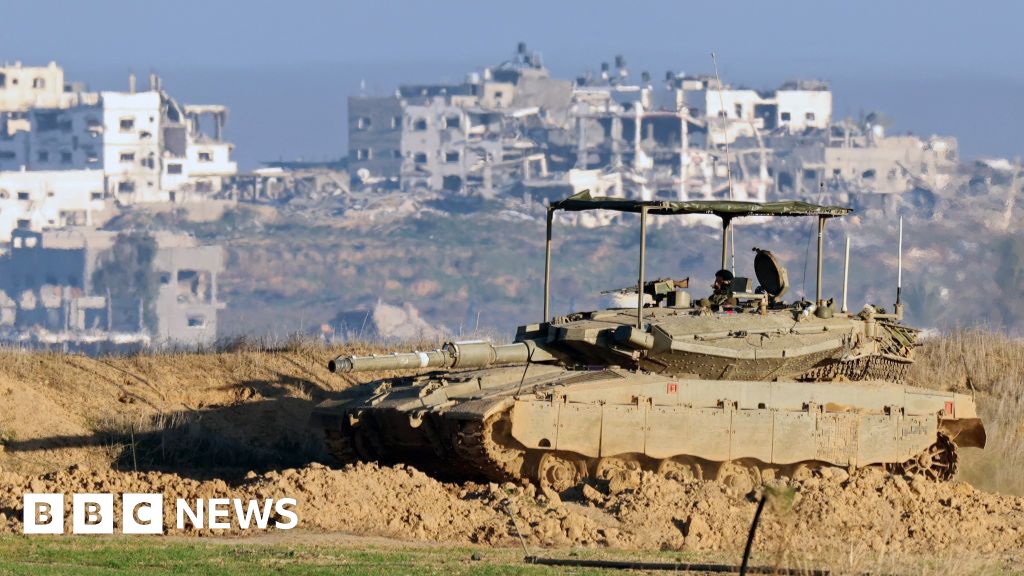“`html

Fact Check Analysis: Gaza Ceasefire Deal – What Do We Know?
At DBUNK LLC, we recently received a fact-check request submitted by one of our subscribers, highlighting concerns about the article’s accuracy and looking for clarity amidst conflicting reports on the Gaza ceasefire deal. This request demonstrates our mission: empowering users to combat misinformation and access factual insights. Let’s dive into our analysis of the article “Gaza ceasefire deal: What do we know?” by Raffi Berg, published on January 16, 2025.
Claims That Require Scrutiny
Analyzing the article published by BBC News (original article here), we found a mixture of verifiable reporting, contextual gaps, and elements requiring correction or clarification. While the ceasefire update is framed as a significant development, inaccuracies, unsubstantiated claims, and missing details dampen the credibility of the piece. Below we break down key issues.

Misrepresentation: Death Toll In Gaza
The article cites Gaza’s Hamas-run health ministry as reporting “more than 46,700 people – the majority of them civilians – have been killed by Israel’s attacks.” While this figure has been widely circulated, it lacks independent verification from neutral sources. Given the partisan nature of Gaza’s health ministry, the death toll may be inflated to sway international opinion. This claim should be contextualized, with emphasis on the challenge of verifying figures in conflict zones. Readers deserve accurate, well-sourced data to make informed judgments.
Missing Context: Stages of the Ceasefire
The article details a phased approach to the ceasefire, including a “full and complete ceasefire” in Stage One, the release of hostages and prisoners, and humanitarian efforts. However, it fails to address key operational questions. Notably, what mechanisms will ensure compliance from both sides? Who will monitor the ceasefire, and what are the penalties for violations?
Additionally, describing humanitarian aid as “hundreds of lorries allowed in each day” is vague and lacks context about Gaza’s actual needs vis-à-vis these deliveries. For precision, independent reports or expert assessments should be provided.

Unverified Claim: Prisoner Release Terms
The article states that “Israel is expected to release about 1,000 Palestinian prisoners, some jailed for years, in return for the hostages.” While this number has been reported by multiple outlets, it has not been officially confirmed by the Israeli government. Given the delicate nature of the negotiations, presenting speculative figures as facts undermines journalistic accuracy. Moreover, the article fails to clarify criteria for the prisoners’ release—details central to public understanding of the deal.
Bias Alert: Depiction of Humanitarian Crisis
The article accurately emphasizes the dire humanitarian crisis in Gaza but disproportionately assigns blame to Israel without sufficiently examining Hamas’s actions, such as using human shields or diverting humanitarian aid. This lopsided portrayal risks alienating audiences seeking balanced, unbiased reporting.
User’s Question Answered
One of our readers posed a compelling question: “What guarantees are there that releasing prisoners and hostages won’t just reignite more violence later?”
The article regrettably does not explore this concern in depth, leaving readers with an incomplete picture. To address this, it’s crucial to note that past prisoner swaps between Israel and Hamas have often seen released individuals return to militant activities, exacerbating tensions. Furthermore, Hamas’s refusal to guarantee the hostages’ long-term safety—in exchange for prisoners—leaves open the possibility of renewed violence.
Experts suggest that third-party monitoring, enforceable timelines, and international accountability mechanisms must be part of any sustainable ceasefire deal to prevent a re-escalation.

Conclusion
While the article provides an essential update on the Gaza ceasefire deal, its speculative claims, lack of independent verification, and incomplete context undermine its reliability. Journalism must meet a higher standard of rigor to serve readers on both sides of the political spectrum who are grappling with chronic mistrust toward media outlets.
DBUNK LLC remains committed to sifting through misinformation, bringing clarity to the murky world of news reporting. You, too, can contribute to this mission by submitting fact-check requests for free. We’ll dig in, cross-reference, and publish results to empower you to make evidence-based decisions.
Stay vigilant and question everything. Download the upcoming DBUNK App for real-time fact-checking solutions!
“`

